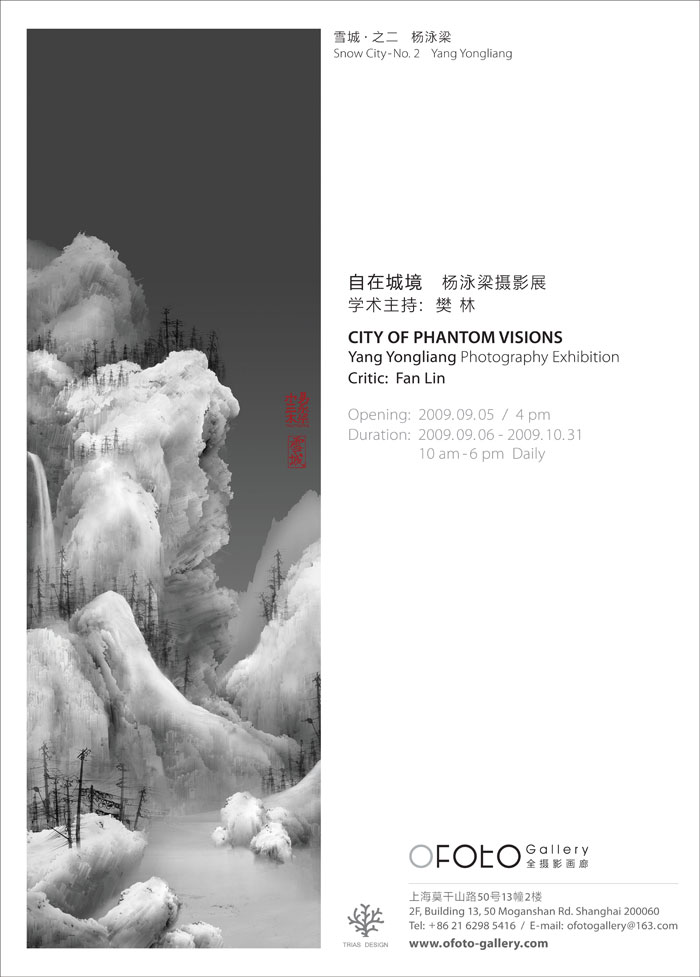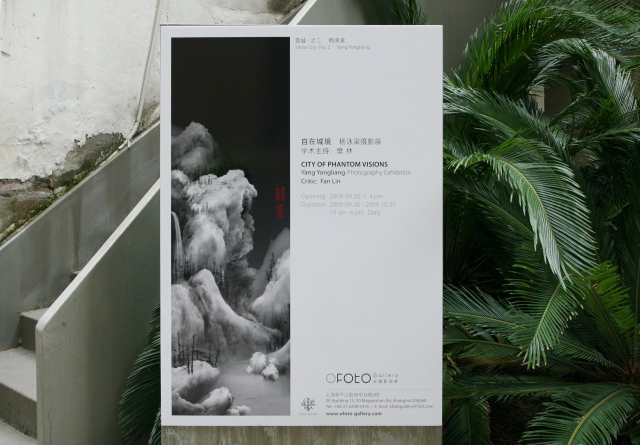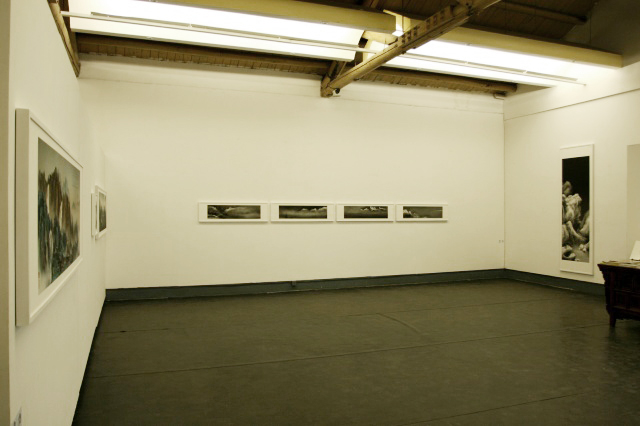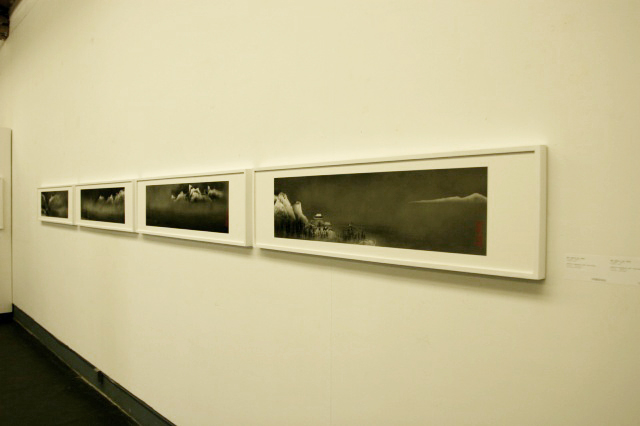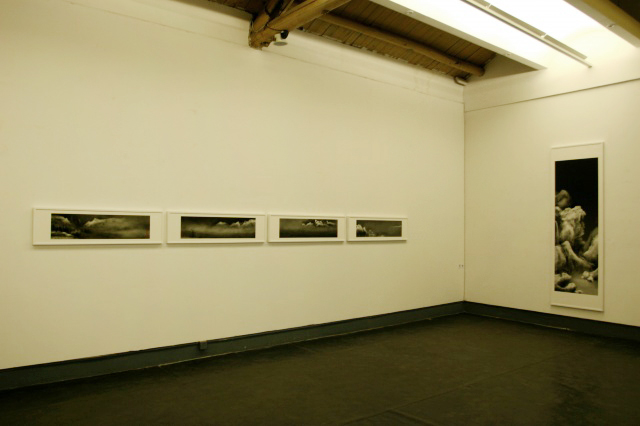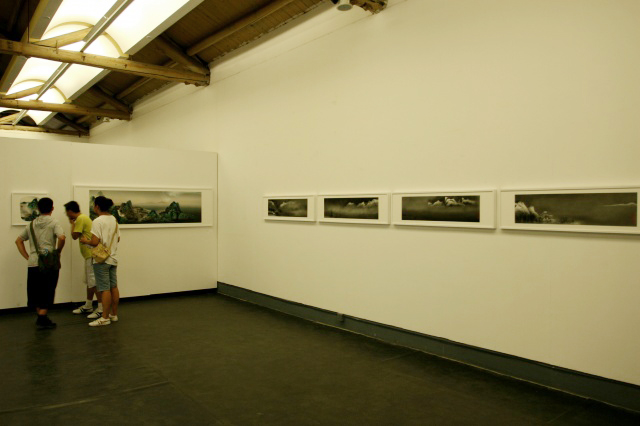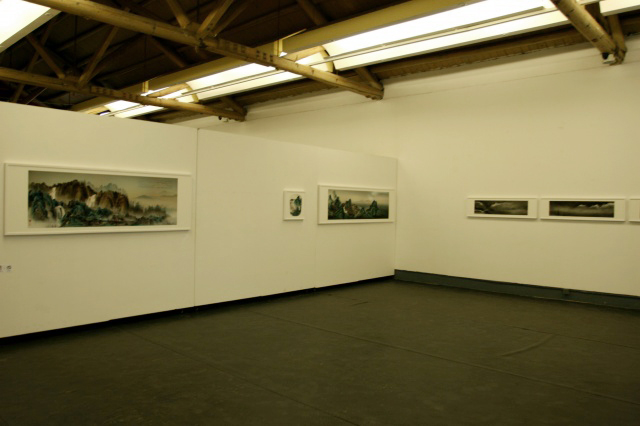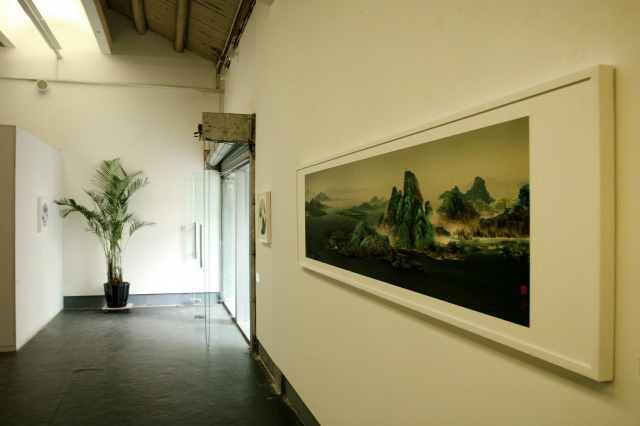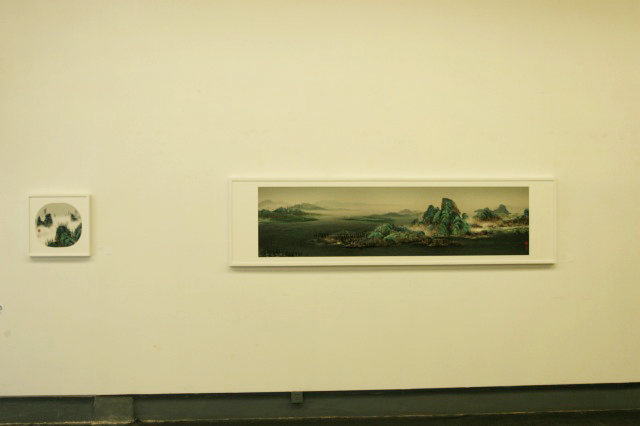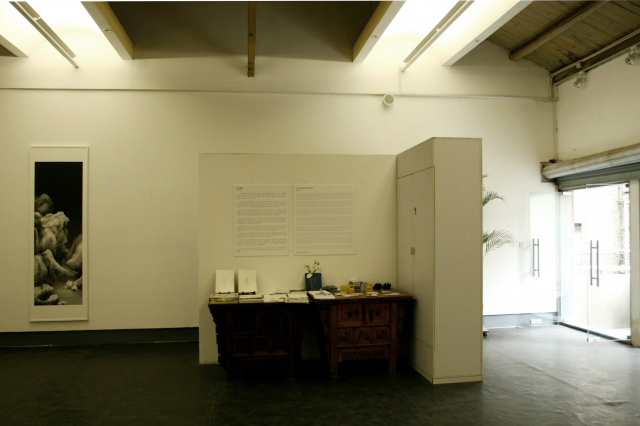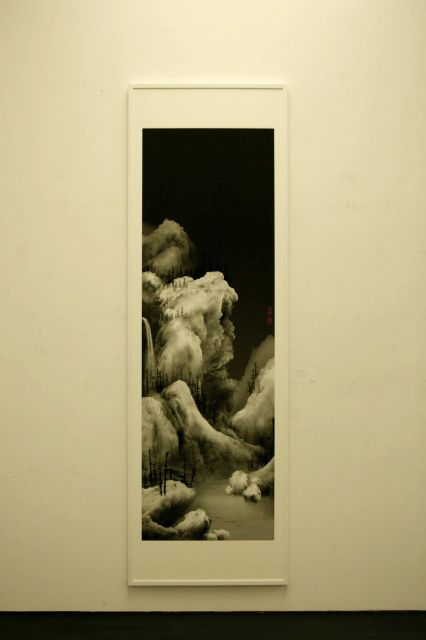City of Phantom Visions
Fan Lin
Yang Yongliang's previous series embody an atmosphere of elegant brushstrokes, emphasizing his compositional arrangement of 'shansui' (landscape painting), and thus revealing the establishment of a connection of special significance between the landscape scroll and the contemporary, flourishing, tumultuous constructions of the city. This time, the works on exhibition; Snow City and Viridescence, discernibly go further. In the scrolls of the series Snow City especially, the 'recurrence of rocks, gullies, stones and ancient trees' typical of Yang's work, encompass the deep and remote atmosphere of snowy mountain scenes and capture the spirit of the landscapes of the Song Dynasty.
Scenery is an interesting focus of observation. It is each person's own affair. Simultaneously, it is often another person's affair. Therefore, scenery is an easy matter to identify with, however it is not easy to construct a landscape image. The enjoyment and perception of scenery felt by people of different eras and areas may be, on the one hand, derived from the influence of the constraints of their natural environment and, on the other hand, derived from their perceptions generated by early landscape paintings. Therefore, both scenes of reality and scenes within pictures become complicated formal compositions.
Clearly, we do not need to discuss the reasons behind Yang Yongliang's work. The consciousness of a specific era, specific society and specific people motivates a specific method. When we allow ourselves to be led by Yang Yongliang's way of 'observing' scenery, his pictures develop attributes designed for our close examination. Our observation has become a part of Yang’s design. Through our attempts to discriminate amongst the different elements of the composition, we vividly experience the guidance provided by the photographer as well as the guidance he himself has gained from the landscape paintings of the Song and Yuan Dynasties.
Mountain ranges and forests, continuous expanses of pure whiteness and an atmosphere of solemnity often feature in the snowy landscapes of the Song Dynasty. As a photographer, Yang Yongliang need not imitate this style with ink and brush, depicting similar lush trees in the forground, crouching mountains in the background and smoothly flowing rivers in the centre. The forms of the landscape naturally stimulate a certain mood in the viewer. To paraphrase the words of Guoxi (1023-1085, an artist of the Northern Song Dynasty), 'the dusky haze of the winter mountains cloaks the people in despondency.' These exquisite compositions including 'liubai' (a Chinese painting method of leaving white areas of the picture plain) in the album composition, embody the nourishment that Yang Yongliang has derived from the landscape paintings of the Song and Yuan dynasties.
Indubitably, Yang Yongliang's works cannot be observed or reviewed with the same methodology which we apply to 'straight photography'. Moreover, they do not belong to the same category as those photographs with later 'photo-shopped' elements. Therefore, what is known as 'created vision' has perhaps become the key to the work. The interweaving of the inner sense of ampleness with the 'man-made depiction,' together construct an individual vision and artistic conception.
When we hope ourselves to discover the nature of the intent in Yang Yongliang's approach and when we are confronted with Yang Yongliang's creations of recent years, we obtain a coherent sense of style. Simultaneously, we see with clarity that none of us are alone in our recognition of his style. Many descriptions of the landscape can assist us in expounding Yang's creations.
In this way, we can immediately feel the similar taste in Yang Yongliang's Viridescence and Wang Ximeng's Scroll of Hundreds of Kilometers of Rivers and Mountains: which depicts bamboo thickets, monasteries and village yards, thatched cottages, bridges, pavilions and boats with such abundance and consistency that they become impossible to remember. Similarly, Snow City may be associated with the description in Charles Dickens' Bleak House; 'Fog everywhere. Fog up the river, where it flows among green aits and meadows; fog down the river, where it rolls defiled among the tiers of shipping, and the waterside pollutions of a great (and dirty) city.'
At the present time, Yang Yongliang's scenery is certainly no longer the photographer's scenery alone. Instead, it encompasses the many eyes of those who pay close attention to the issue of urban construction. He need not confront such a landscape alone. With the help of a little over-interpretation and assent, we too may gain our own contemporary panoramic landscape.
Translation: Nicola Kielty
